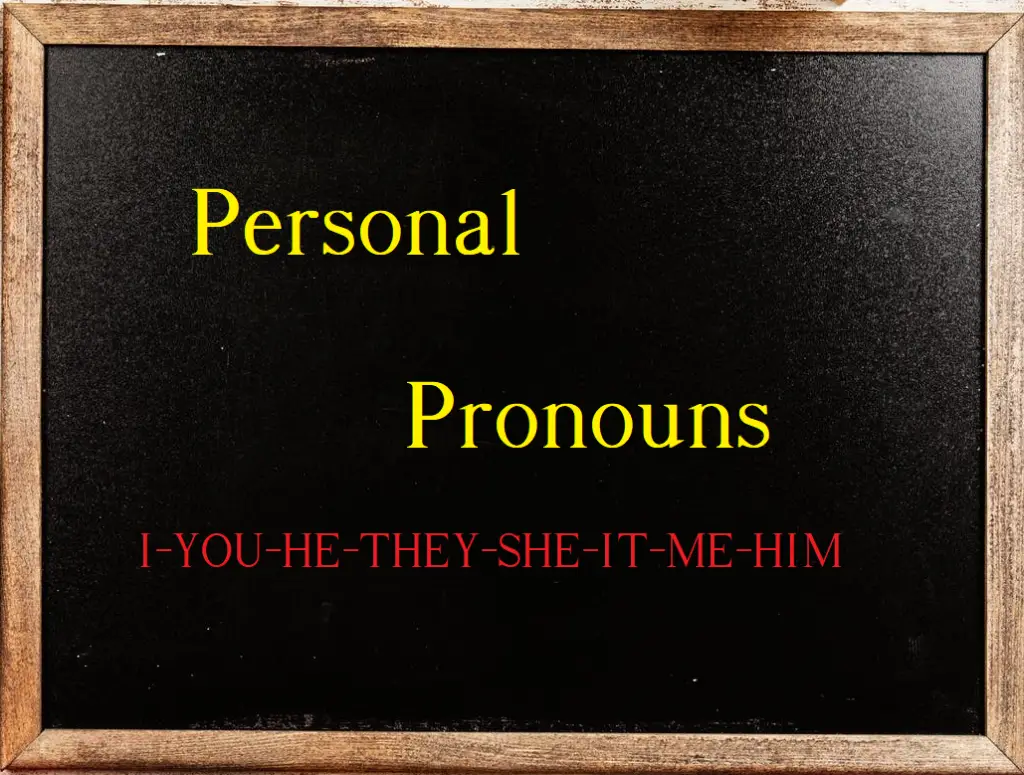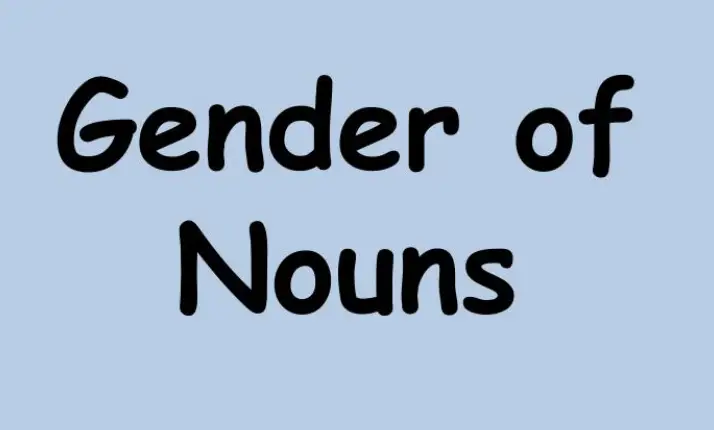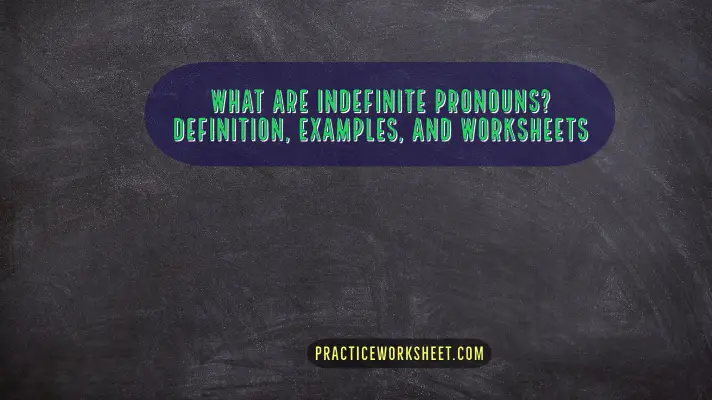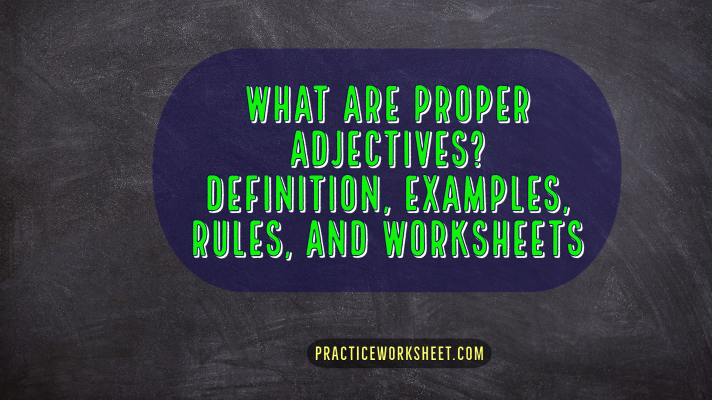Personal pronouns are pronouns used to represent a particular person, animal, or thing. It represents a grammatical person in a sentence. They are widely used to avoid repetition in place of names. Even though personal pronouns often indicate an actual person, they can also refer to animals, inanimate objects, or even intangible concepts. Depending on the number, person, gender, and case personal pronouns take different forms.
Use of Personal Pronouns
As mentioned above there are four grammatical elements that influence the proper use of personal pronouns in a sentence. They are
- Number (Singular or Plural)
- Person (first, second, or third person)
- Gender (male, female, or neuter/neutral), and
- Case (subjective, objective, or possessive)
Examples of Personal Pronouns
I, we, you, she, he, it, they, me, him, them, her, us, etc are all examples of personal pronouns. In these examples, the personal pronouns I, you, he, her, it, me, him, and she are used as singular while you, we, they, them, us are used as a plural. The following table provides a list of personal pronouns used in the English language.
| Person | Number | Gender | Subjective Case | Objective Case | Possessive Case |
| First Person | Singular | Masculine/feminine | I | Me | My |
| Plural | Masculine/feminine | We | Us | Our | |
| Second Person | Singular/Plural | Masculine/feminine | You | You | Your |
| Third Person | Singular | Masculine | He | Him | His |
| Feminine | She | Her | Her | ||
| Neuter | It | It | Its | ||
| Plural | Neuter | They | Them | Their |
Personal Pronouns-Number
Based on the number of referred items, Personal pronouns are divided into Singular and Plural categories. Note from the above table, that only the first and third-person personal pronouns have plural forms. The second-person pronouns are same in both singular and plural form and to determine the number of second-person pronouns, one needs to read the complete sentence. There is no specific rule to how personal pronouns change when they become plural; So, simply memorize them.
Personal Pronouns-Person
Personal Pronouns are divided into first person, second person, and third person. First-person pronouns refer to the speaker himself (Example: I, we, us, me, my, mine); the second-person points to the person being addressed (Example: you); while third-person signify third party members (Example: he, she, they, them, it).
Personal Pronouns-Gender
A personal pronoun refers to the gender of the person or animal it represents. Only for third-person singular numbers, the personal pronoun is very important as depending on gender it changes. However, first and second-person pronouns and third-person plural pronouns are gender-neutral.
Note that, countries and vehicles are sometimes given a feminine form while speaking of in the third person. For example, “The Titanic was a very good ship. She had seen her adventure before drowning” Here, the personal pronoun ‘she’ is in the feminine form.
Cases of Personal Pronouns
Depending on the function of personal pronouns as subject or object in a sentence; three cases of personal pronouns are defined. They are the subjective case, objective case, and possessive case.
When a personal pronoun acts as the subject of a verb, it is said to be in the subjective case.
When a personal pronoun acts as the direct or indirect object of a verb, it is in the objective case.
For example, in the sentence, “He told me to leave the room”. Here, the personal pronoun ‘he’ is in the subjective case and ‘me’ is in the objective case.
When the personal pronoun implies the possession they are in the possessive case. For example, In the sentence “This is my computer”, the personal pronoun ‘my’ is in the possessive case.
Personal pronoun Worksheets
Hope, the subject of personal pronoun is quite clear to you. So, let’s jump to the personal pronouns worksheet section to resolve a few related exercises.

Personal Pronouns Worksheet 1: Fill in the blanks using using appropriate Personal pronouns
- Kapil is thirsty. _________ is searching for water.
- Ram’s grandmother is old. ________ needs help for walking.
- The students are young. _____________ are playing in the park.
- The restaurant is expensive. ____________ costs $20 per meal.
- The dog is angry. Be aware; ___________ may bite you.
- The city is big. ____________ has huge population.
- The girls are pretty. ___________ are dancing on the floor.
- The sock is clean. ___________ was washed yesterday.
- The socks are dirty. Don’t wear __________.
- You and your brother are sad. Both of __________ should relax.
- The man is tired. Give _______ a glass of juice.
- The men are rich. ___________ can easily buy that car.
- The woman is quiet. ____________ is thinking about __________ son.
Personal Pronouns Worksheet 2: Answer the following questions with a personal pronoun
- Do your friends like Mohor?
- Do you like scary movies?
- Do your local guardian knows your class-teacher?
- Do her mother know you and Ismat?
- Do your cousin know her friends?
- Do you have your paper?
- Do you help your parents?
- Do your friends understand me?
- Do you play with your sister?
- Do you speak Arabic?
- Does Firan love kids?
- Do you and Swarnali play with me?
- Do you believe in ghosts?
- How frequent do you polish your shoes?
- What time do you finish this class?
Personal Pronouns worksheet 3: Correct the sentences using proper personal pronouns
- Mrs. Biswas is strict. I don´t like him.
- Zaki isn´t good at science. I never copy from he.
- We have a computer at home, but I don´t use me
- Baby birds cannot fly. So, Their mother feed him
- My class teacher is very good. I like them.
![Singular and Plural Nouns: Definition, Rules, Examples, and Worksheets [With PDF] Singular and Plural Nouns](https://practiceworksheet.com/wp-content/uploads/2020/11/Singular-and-Plural-Nouns.png)





![Collective Nouns: Definition, Examples, and Worksheet [With PDF] Collective Nouns Worksheet](https://practiceworksheet.com/wp-content/uploads/2020/03/Collective-Nouns-Worksheet.png)
